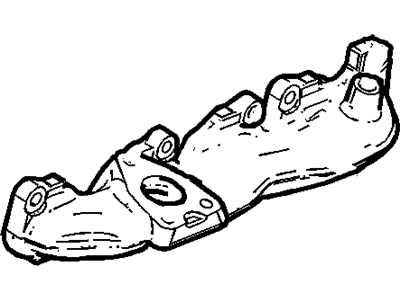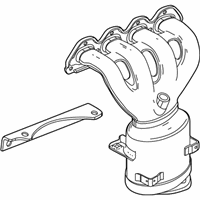
My Garage
My Account
Cart
Genuine Chevrolet Cruze Exhaust Manifold
Engine Exhaust Manifold- Select Vehicle by Model
- Select Vehicle by VIN
Select Vehicle by Model
orMake
Model
Year
Select Vehicle by VIN
For the most accurate results, select vehicle by your VIN (Vehicle Identification Number).
5 Exhaust Manifolds found
Chevrolet Cruze Manifold Assembly,Exh (W/ 3Way Ctltc Conv, Kit)
Part Number: 19420229$1437.23 MSRP: $2341.57You Save: $904.34 (39%)Ships in 1-3 Business DaysChevrolet Cruze Manifold Assembly,Exh (W/ 3Way Ctltc Conv, Kit)
Part Number: 19420237$1159.56 MSRP: $1744.20You Save: $584.64 (34%)Ships in 1-3 Business DaysChevrolet Cruze Manifold Assembly,Exh (W/ 3Way Ctltc Conv, Kit)
Part Number: 19420233$1253.32 MSRP: $1877.70You Save: $624.38 (34%)Ships in 1-3 Business DaysChevrolet Cruze Exhaust Manifold Assembly
Part Number: 55580974$148.75 MSRP: $237.25You Save: $88.50 (38%)Ships in 1-3 Business DaysChevrolet Cruze Exhaust Manifold Assembly
Part Number: 55490673$123.90 MSRP: $195.82You Save: $71.92 (37%)
Chevrolet Cruze Exhaust Manifold
Exhaust Manifold of Chevrolet Cruze vehicle helps in channelling hot gasses from the engine to the exhaust system hence helping in efficient performance of the vehicle's engine as well as minimizing toxic emission. Located on the top of the exhaust system the Chevrolet Cruze Exhaust Manifold channels exhaust gases from multiple cylinders to the catalytic converter and the muffler. This process allows avoiding intake reversion that is inimical to the engine efficiency. Chevrolet Cruze has had different kinds of exhaust manifold used up to date, and the most common include the cast iron or the stainless steel material. There are after market options sometimes referred to as headers that are intended to improve performance through the elimination of flow resistance and allowing higher velocities of exhaust gas. Unlike the typical manifolds that are more concerned with crankcase durability, headers improve performance by enhancing cylinder scavenging together with pressure dynamics. The Maintenance of the Exhaust Manifold and when to change the Exhaust Manifold should be well conducted to prevent performance problems and to protect passengers from the dangerous gases produced by leaks from the exhaust.
Each OEM Chevrolet Cruze Exhaust Manifold we offer is competitively priced and comes with the assurance of the manufacturer's warranty for the part. Furthermore, we guarantee the speedy delivery of your orders right to your doorstep. Our hassle-free return policy is also in place for your peace of mind.
Chevrolet Cruze Exhaust Manifold Parts Questions & Experts Answers
- Q: How is the removal and installation process for the exhaust manifold and turbocharger on Chevrolet Cruze?A:For the 1.4L engine, the turbocharger is integrated into the exhaust manifold and cannot be serviced separately. On 2016 and later models, the exhaust manifold is integral to the Cylinder Head. For the 1.8L engine, the catalytic converter is also integrated into the exhaust manifold and cannot be serviced separately. To begin removal, disconnect the cable from the negative battery terminal, then remove the exhaust manifold heat shield. Raise the vehicle and support it securely on jackstands. Detach the exhaust pipe from the manifold/catalytic converter by soaking the retaining nuts with penetrating oil before unscrewing them. Follow the lead from the oxygen sensor to its electrical connector, unplug it, and detach the lead from its retaining clip. Remove the exhaust manifold support bracket bolts to the engine block while leaving the support bracket attached to the converter. Next, remove the exhaust manifold mounting nuts and detach the manifold assembly from the cylinder head. For installation, thoroughly clean the mating surfaces on the cylinder head, manifold, and exhaust pipe using a scraper and brake system cleaner. Ensure the mating surfaces are flat and undamaged; a warped or damaged manifold may need machining or replacement. Install the new gasket onto the cylinder head studs and place the manifold on the cylinder head, tightening the nuts evenly from the center outwards to the specified torque. Connect the exhaust pipe to the manifold and tighten the nuts evenly to the specified torque. The remainder of the installation follows the reverse order of removal. Finally, reconnect the battery and run the engine to check for exhaust leaks.















